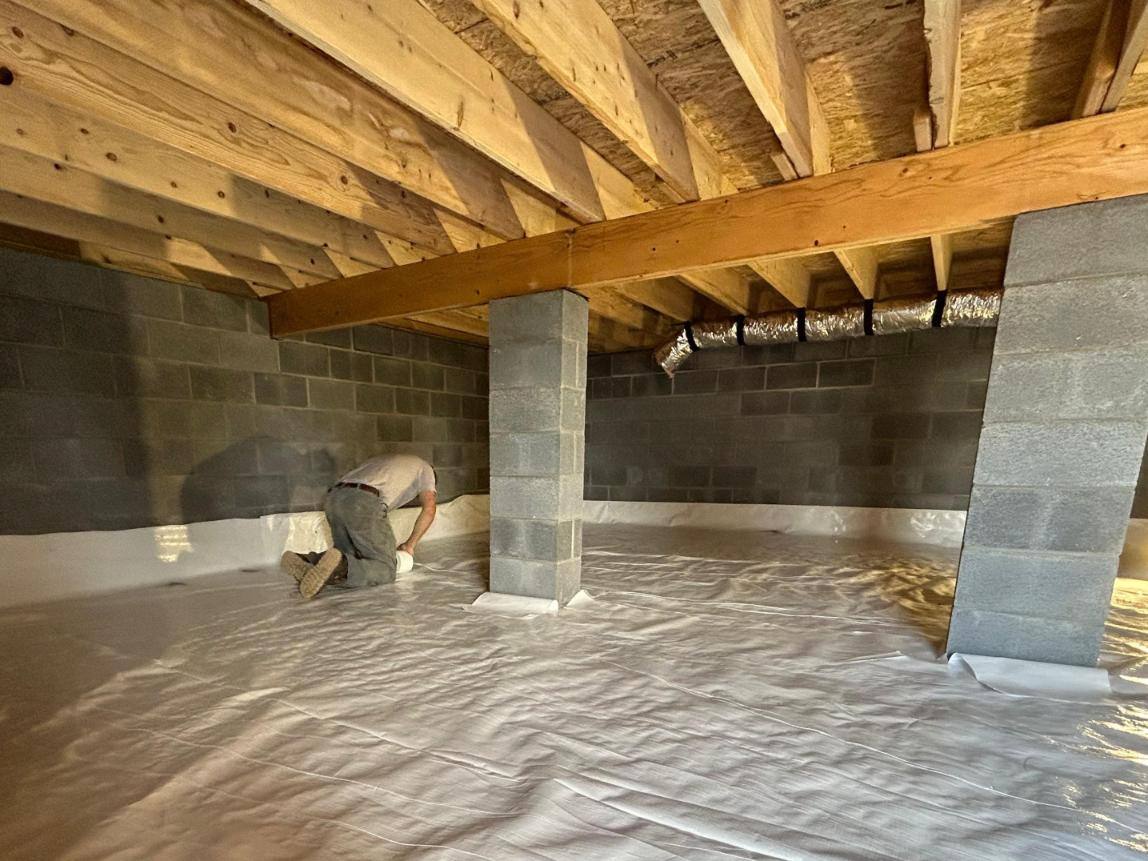Search for topics or resources
Enter your search below and hit enter or click the search icon.

Most crawl spaces are unpleasant areas of the home. If you have a dingy crawl space under your home, you might be thinking about ways of making it less disgusting. Does your crawl space need to breathe? Could eliminating ventilation help to make your crawl space better?
South Central Services has insulated hundreds of homes in and around Greencastle, PA. In our service area, crawl spaces contribute to energy inefficiency and unclean air. Depending on the crawl space, we recommend different ways to address those problems. The short answer is that crawl spaces do need to breathe unless they are encapsulated.
By the end of this article you will understand:
Don't have time to read right now? Check out everything you need to know at a glance.
In southern Pennsylvania, crawl spaces are typically vented. Vented crawl spaces have several vents allowing free air exchange between the outside and the crawl space. These vents are intentionally put around the crawl space's perimeter to encourage air ventilation.
You cannot cover up or block these vents to improve your crawl space environment. Stopping ventilation alone will only exacerbate the issues your crawl space is facing, such as mold, mildew, or uncontrolled moisture.

However, the act of ventilating your crawl space still causes problems for your home. Due to the stack effect, air from your crawl space is pulled into your living space. The temperature of the air forces your HVAC to work harder, and the quality is less than ideal. You will have higher energy costs as long as air exchanges freely and randomly through your crawl space vents.
To address the root problems in your crawl space, you need to do more than just cover up the vents. You need crawl space encapsulation.
 An encapsulated crawl space does not allow air to exchange through vents. When a crawl space is encapsulated, insulation is installed on the walls, and a vapor barrier is installed against the floor and walls. These two additions help to create a space where the air can be conditioned.
An encapsulated crawl space does not allow air to exchange through vents. When a crawl space is encapsulated, insulation is installed on the walls, and a vapor barrier is installed against the floor and walls. These two additions help to create a space where the air can be conditioned.
Without vapor barriers in the crawl space, there would be even more moisture problems below your home.
Once a crawl space is encapsulated, there is no more ventilation between the crawl space and outside air. However, the air still needs to be conditioned.
Conditioning the air can refer to heating, cooling, or dehumidification. Our team recommends installing a dehumidification system in encapsulated crawl spaces to maintain the environment under the home.

An encapsulated crawl space is no longer "breathing," but the air is cleaner and better controlled. As air exchanges between your home and your crawl space, there is less strain on your HVAC equipment. The air is also better for you to breathe.
If you have a traditionally vented crawl space, your crawl space technically "needs to breathe" for the health of your home. Blocking off the vents in the crawl space will not solve moisture issues.
However, if you want to repair your crawl space, encapsulation is one of the best options available. Encapsulation will block off vents in the crawl space but it also prevents vapor transfer. Once a crawl space has been encapsulated, it no longer needs ventilation. Instead, a dehumidification system can condition the air.
Now that you know when crawl spaces need ventilation, your next step is to:
Disclaimer: While we strive to publish information accurate to building science, local building codes and standards supersede our recommendations.
Kilian has co-owned and operated South Central Services for 8 years. He is passionate about community involvement. In his spare time, he enjoys being with his family, playing ice hockey, and going fishing with friends.
Topics: